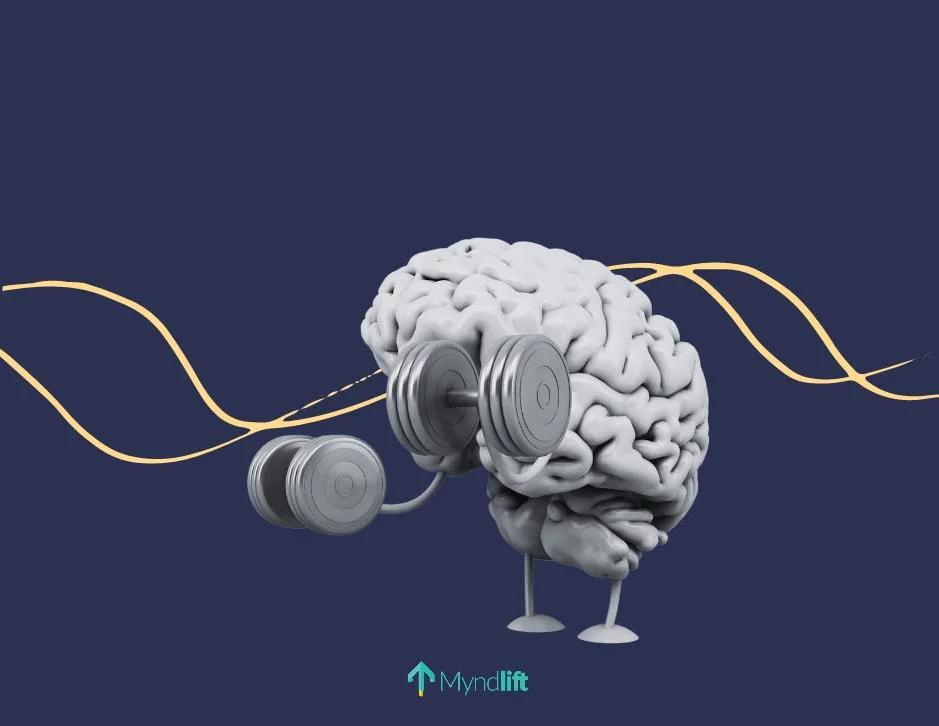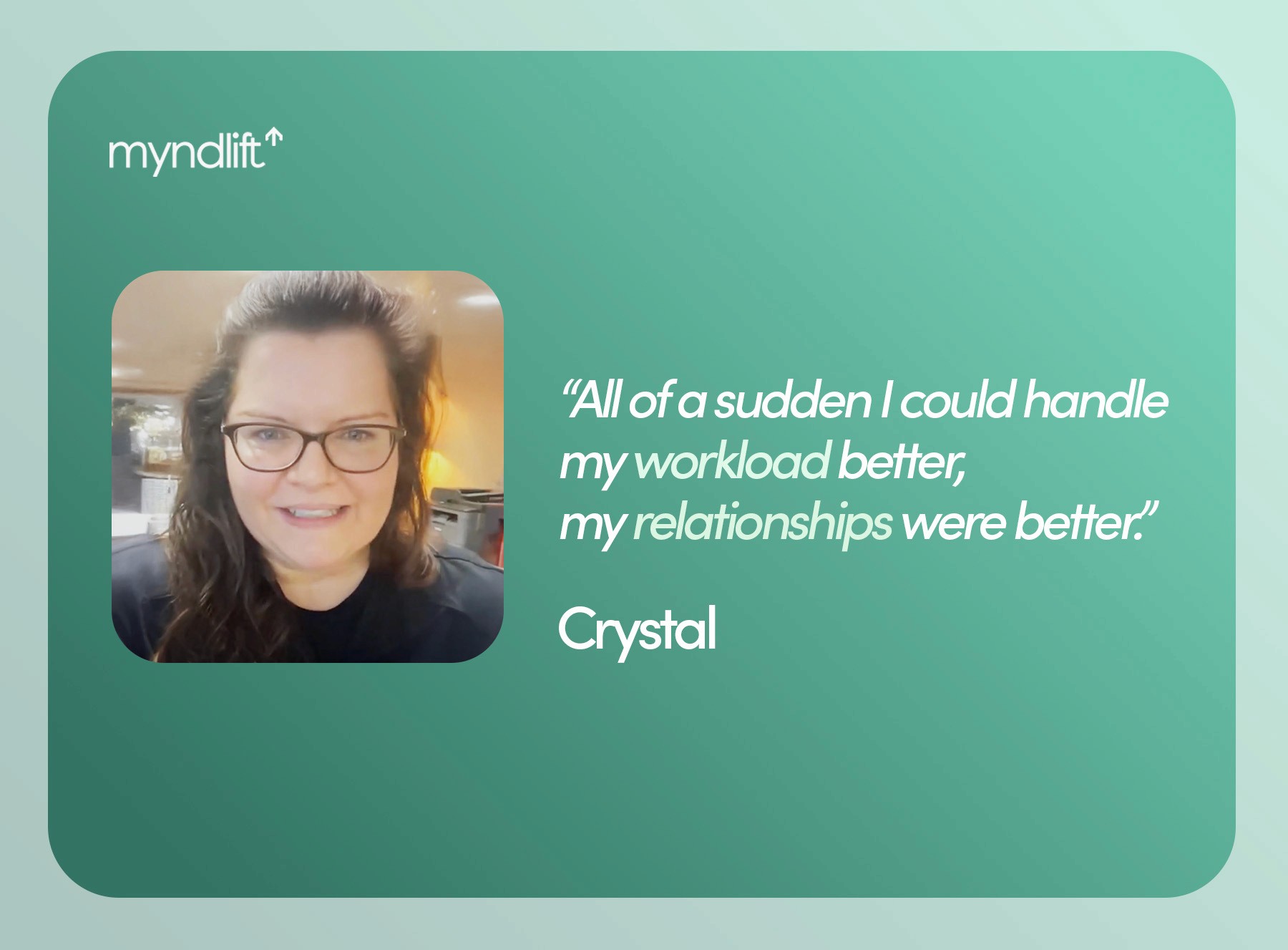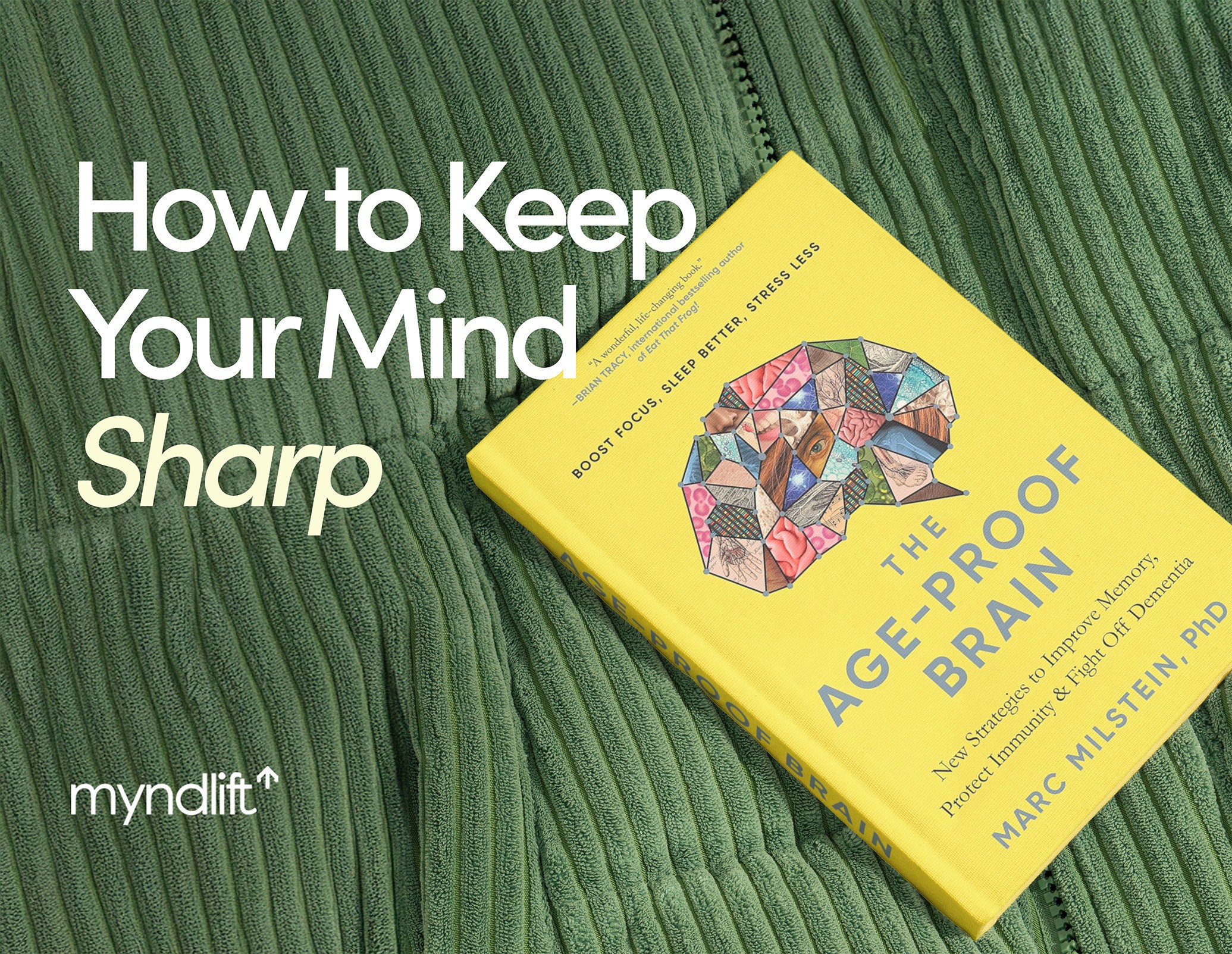Here’s something you may not have known: the notion that your brain stops changing past a certain age is a myth. The brain continues to learn and evolve throughout your entire lifetime.
And here’s something even more interesting: you can actively contribute to making these positive changes happen.
Yes, it’s true. Thanks to neuroplasticity – your brain’s ability to form and strengthen neural connections in response to external and internal stimuli – you are able to learn new skills, improve memory, and even boost focus.
The latter is what we’ll explore today. Let’s unpack how neuroplasticity works and which five exercises you can start doing to improve concentration and other cognitive abilities.
Learn a new language
Play a musical instrument
Solve puzzles (crosswords & sudoku)
Break a sweat
Play neurofeedback training games
What Is Neuroplasticity?
Neuroplasticity is made up of two words:
Neuro: This refers to the nervous system, which is composed of nerve cells (these are called neurons) that send and receive messages from your brain, therefore allowing you to think, move, and even breathe
Plasticity: This translates to “flexibility” or “malleability”, which means that the connections between the neurons in your brain aren’t something fixed and stable but rather something that changes over time
Here’s a simplified explanation of how neuroplasticity works in practice.
There are billions of neurons (nerve cells) in the human brain, which communicate with each other via synapses, the connections between neurons. For example, the more a certain skill is developed, the stronger the synaptic connection between the relevant neurons. Similarly, the less you practice that skill, the weaker the connection becomes.
Let’s say you used to learn French a few years ago. Every day, you were strengthening the pathways between your “French” neurons, which allowed you to improve. However, now that you haven’t spoken French in over three years, those pathways have slowly grown weaker and your skill has deteriorated.
However, neuroplasticity doesn’t occur only as a result of skill learning. The brain's ability to adapt and reorganize itself through neuroplasticity allows for improvements in cognitive
functions such as memory, problem-solving, and focus.
5 Neuroplasticity Exercises to Boost Focus
Focus is a vital cognitive function that allows you to stay concentrated on a task and remain resilient to potential distractions. Your brain’s neuroplasticity is the key to boosting focus – all you have to do is give your brain a little workout on a regular basis.
When you make your brain “sweat” – that is, introduce it to new challenges and put it to work – it will begin to form and strengthen new synaptic connections, sharpening your mind and improving your attention.
Exercise 1: Learn a new language
Learning a new language can not only improve your focus but also help you develop a valuable skill – speaking in another tongue. A win-win!
Don’t believe us? The science speaks for itself:
One study shows that even a very short period of intensive language learning (a one-week course in Scottish Gaelic) boosts attention, and what’s more, the benefits can be maintained if students continue to practice their new language in the long run.
Another study says that just four months of studying a foreign language has been shown to improve overall cognition in elderly individuals. Now, that’s impressive!
In addition to the above, researchers from the University of Birmingham have said that bilinguals have an increased ability to maintain attention and zero in on the task at hand, so if you were already born speaking more than one language, you’re in luck! Apart from improved concentration, bilinguals also benefit from better memory and higher executive functioning overall (this includes planning, organization, and emotional control).
Say oui to enhancing your focus and entering a whole new culture at the same time.
Exercise 2: Play a musical instrument
Music lovers, are you hearing this? Playing a musical instrument is not only rewarding in and of itself but it can also help you keep your cognitive abilities up to shape – focus included.
According to research, there are cognitive differences between musicians and non-musicians. For example, musicians possess much better visual abilities (e.g., they notice changes in their field of vision more quickly), and researchers have pointed out that this may be related to enhanced attention.
Scientists have often pondered whether these changes are the result of music training or whether people with enhanced cognitive abilities are more likely to play a musical instrument in the first place.
Fortunately, there are studies that confirm that musical training truly does have an effect on the brain’s plasticity, especially when it comes to auditory processing (e.g., musicians have better musical hearing) and motor control (e.g., musicians are better able to control their hand movements).
Exercise 3: Solve puzzles (crosswords & sudoku)
Another brain exercise you can try is playing a crossword or a round of sudoku every day.
Research points to the effectiveness of solving puzzles when it comes to focus and other cognitive abilities (such as memory and reasoning).
For instance, a study from 2019 looked at over 19,000 participants aged 50 to 93 and found that those who played number or word-based puzzles (for example, sudoku or crosswords) more than once a day outperformed those who didn’t on all cognitive tasks, including attention (how long and how well they could focus on a task), memory (how much information they could remember), and processing speed (how quickly they could react to new stimuli).
To make sure you really benefit from this exercise, the puzzle in question should ideally be challenging enough to give your brain a nice workout but not too hard to feel overwhelming.
The sweet spot in the middle is what often triggers a “flow state”, which is when you’re so immersed in an activity that you focus solely on the task at hand and find the process rewarding in and of itself.
A flow state is characterized by an increase in theta brainwaves. Brainwaves – patterns of electrical activity in the brain – are all associated with different mental states. Since theta brainwaves tend to occur during deep meditative states, it makes sense that they also increase when you enter a flow state because that is when your focus is so high that you are fully engaged in the task at hand.
Research has found that increasing the difficulty of sudoku does trigger theta brainwaves, but make sure that the puzzle isn’t too difficult as that would possibly discourage you.
Exercise 4: Break a sweat
If you want to improve your focus, exercising your brain isn’t the only option – you can also give your whole body a workout!
Alongside all the health benefits, physical exercise is also an excellent way to enhance cognition.
Studies indicate that people who are more active may process information more quickly and are better able to pay attention to their surrounding environment. They also have improved memory abilities and perform better on academic tasks.
This is because aerobic exercise helps form and strengthen connections between neurons, increases the grey matter volume in the hippocampus (brain part which is responsible for memory), allowing for better cognitive function, and activates the prefrontal cortex (part of the brain which plays a vital role when it comes to attention, decision-making, and other executive functions).
Even a single workout can improve these cognitive abilities. Therefore, consider hitting the gym before getting started on a task that requires a lot of focus.
Exercise 5: Play neurofeedback training games
Neurofeedback is a specific type of brain training that aims to improve your performance through optimized games.
Neurofeedback uses a technology called Electroencephalography (EEG) to measure your brainwaves (electrical patterns in the brain), all of which are related to different states of mind.
Beta brainwaves, for example, are associated with focus and logical problem-solving, so a neurofeedback game might help you improve your focus by giving you the opportunity to increase beta brainwaves on purpose.
Please note: While theta brainwaves are related to flow states and deep internal meditative focus, beta brainwaves are more about analytical and externally directed focus. Both are beneficial when it comes to sustained attention.
For example, imagine you’re playing a racing game with an at-home neurofeedback app, such as Myndlift. Before you begin, you place sensors on your head – these will help monitor your brainwave activity. Once the race is on, your performance in the game is reliant on your ability to focus. The better your concentration, the stronger your beta brainwaves, and the faster you go.
This means that you’re essentially training your brain to view intense focus as something rewarding, strengthening the synaptic connections between neurons and increasing your ability to pay attention.
Conclusion
Thanks to neuroplasticity, we all have a chance to learn new information, pick up new skills, and enhance our cognitive abilities.
However, neuroplasticity is also the reason why certain neural pathways can deteriorate over time if you don’t give your brain the necessary input (such as maintaining your foreign language skills).
Therefore, it’s vital to always look for new ways to challenge yourself and sharpen your mind.
The five above-mentioned exercises – learning a new language, playing a musical instrument, solving puzzles, working out, and using neurofeedback training – are an excellent place to start.
So, what are you waiting for? Let the brain games begin!
Myndlift provides a personalized expert-guided brain training program that can help you achieve your goals towards reaching improved focus and calm. Check if you’re eligible to kick start your journey with us for better brain health from here.
About the author:
Denisa Cerna
Denisa Cerna is a non-fiction and fiction writer who's passionate about psychology, mental health, and personal development. She's always on a quest to develop a better insight into the workings of the human mind, be it via reading psychology books or combing through research papers.
About the checker:
Kaija Sander, Ph.D.
Kaija Sander is a cognitive neuroscientist and scientific consultant for Myndlift. She holds a BSc in Biomedical Science with a specialization in Neuroscience and Mental Health from Imperial College London and a PhD in Neuroscience from McGill University. Her doctoral research focused on brain connectivity relating to second language learning success. She is passionate about the broader applications of science to have a positive impact on people’s lives.
References
Bak, T. H., Long, M. R., Vega-Mendoza, M., & Sorace, A. (2016). Novelty, Challenge, and Practice: The Impact of Intensive Language Learning on Attentional Functions. PLOS ONE, 11(4), e0153485.
Brooker, H., Wesnes, K. A., Ballard, C., Hampshire, A., Aarsland, D., Khan, Z., Stenton, R., Megalogeni, M., & Corbett, A. (2019). The relationship between the frequency of number-puzzle use and baseline cognitive function in a large online sample of adults aged 50 and over. International Journal of Geriatric Psychiatry, 34(7), 932-940.
Bubbico, G., Chiacchiaretta, P., Parenti, M., Di Marco, M., Panara, V., Sepede, G., Ferretti, A., & Perrucci, M. G. (2019). Effects of Second Language Learning on the Plastic Aging Brain: Functional Connectivity, Cognitive Decline, and Reorganization. Frontiers in Neuroscience, 13, 435396.
Caire, Michael J. Reddy, Vamsi. Varacallo, Matthew. Physiology, Synapse. StatPearls Publishing LLC. 2023.
Chang YK, Labban JD, Gapin JI, Etnier JL. The effects of acute exercise on cognitive performance: a meta-analysis. Brain Res. 2012 May 9;1453:87-101
Ferrer-Uris B, Ramos MA, Busquets A, Angulo-Barroso R. Can exercise shape your brain? A review of aerobic exercise effects on cognitive function and neuro-physiological underpinning mechanisms. AIMS Neurosci. 2022 Apr 2;9(2):150-174.
Gomez-Pinilla F, Hillman C. The influence of exercise on cognitive abilities. Compr Physiol. 2013 Jan;3(1):403-28.
Habibi, A., Cahn, B. R., Damasio, A., & Damasio, H. (2016). Neural correlates of accelerated auditory processing in children engaged in music training. Developmental Cognitive Neuroscience, 21, 1-14.
Katahira K, Yamazaki Y, Yamaoka C, Ozaki H, Nakagawa S, Nagata N. EEG Correlates of the Flow State: A Combination of Increased Frontal Theta and Moderate Frontocentral Alpha Rhythm in the Mental Arithmetic Task. Front Psychol. 2018 Mar 9;9:300.
Mandolesi L, Polverino A, Montuori S, Foti F, Ferraioli G, Sorrentino P, Sorrentino G. Effects of Physical Exercise on Cognitive Functioning and Wellbeing: Biological and Psychological Benefits. Front Psychol. 2018 Apr 27;9:509.
Moreno S, Bialystok E, Barac R, Schellenberg EG, Cepeda NJ, Chau T. Short-term music training enhances verbal intelligence and executive function. Psychol Sci. 2011 Nov;22(11):1425-33.
Moriarty T, Bourbeau K, Bellovary B, Zuhl MN. Exercise Intensity Influences Prefrontal Cortex Oxygenation during Cognitive Testing. Behav Sci (Basel). 2019 Jul 26;9(8):83.
Olszewska, A. M., Gaca, M., Herman, A. M., Jednoróg, K., & Marchewka, A. (2021). How Musical Training Shapes the Adult Brain: Predispositions and Neuroplasticity. Frontiers in Neuroscience, 15, 630829.
Rodrigues AC, Loureiro MA, Caramelli P. Musical training, neuroplasticity and cognition. Dement Neuropsychol. 2010 Oct-Dec;4(4):277-286.
Ruegsegger GN, Booth FW. Health Benefits of Exercise. Cold Spring Harb Perspect Med. 2018 Jul 2;8(7):a029694.
Saha, Shuvodeep. EEG as a tool to measure cognitive load while playing Sudoku: A preliminary study. IEEE Conference IEMENTech. 2020.
Schroeder SR, Marian V. A Bilingual Advantage for Episodic Memory in Older Adults. J Cogn Psychol (Hove). 2012 Aug 1;24(5):591-601.
Shaffer J. Neuroplasticity and Clinical Practice: Building Brain Power for Health. Front Psychol. 2016 Jul 26;7:1118.
Tops, M., & Bakker, A. B. (2021). The Neuroscience of the Flow State: Involvement of the Locus Coeruleus Norepinephrine System. Frontiers in Psychology, 12, 645498.
University of Birmingham. Study suggests bilinguals have an improved attentional control. 2016.





